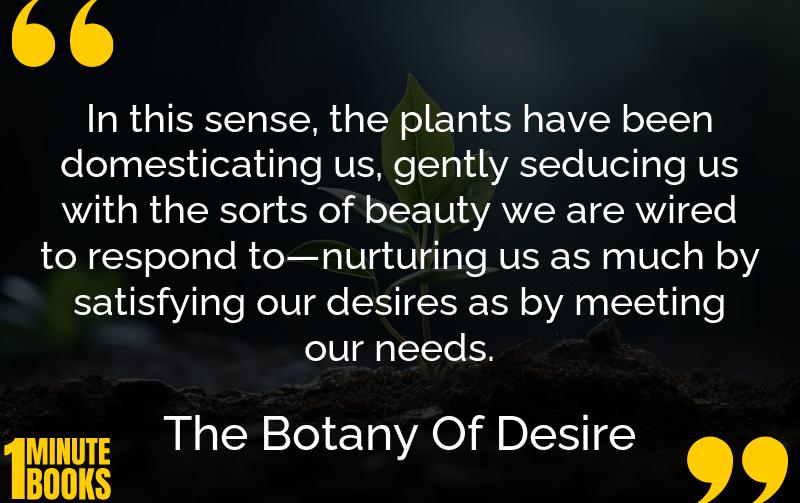
The Botany of Desire explores the relationships between humans and plants, focusing on apples, tulips, cannabis, and potatoes, each symbolizing a distinct human desire: sweetness, beauty, intoxication, and control.
Main Lessons
- Humans and plants have a symbiotic relationship where desires and evolutions intertwine.
- Apples symbolize the human desire for sweetness, influencing their widespread cultivation.
- Tulips reflect our craving for beauty, leading to their global popularity and cultivation.
- Cannabis epitomizes the desire for intoxication, revealing its cultural significance and evolution.
- Potatoes represent the desire for control, impacting agricultural economies and societies.
- The idea of plants having agency challenges traditional perceptions of evolution and agriculture.
- Michael Pollan uses poetic prose to engage readers and highlight connections between nature and culture.
- The book questions whether humans or plants hold true control in the cultivation and propagation process.
- Pollan’s narratives delve into the historical and cultural contexts of each plant, enriching the reader’s understanding.
- The comparison of characters from Greek mythology with plants adds a literary layer to the discussion.
- Pollan emphasizes the intricacies of evolution, often simplified in everyday discussions of nature.
- The relationship between humans and plants is dynamic, evolving as each fulfills the other’s desires.
- Intriguingly, the book encourages readers to consider growing the plants discussed, fostering a deeper connection.








